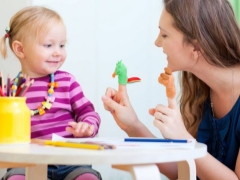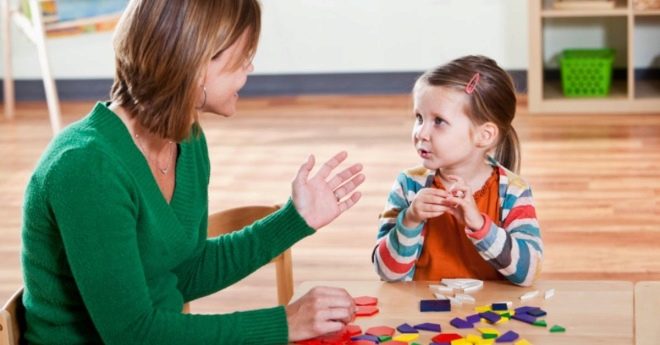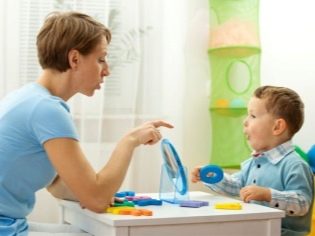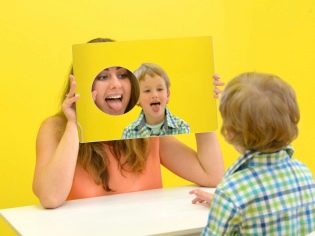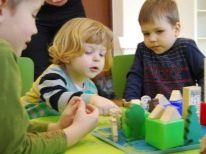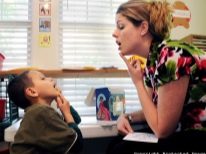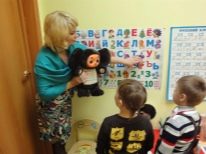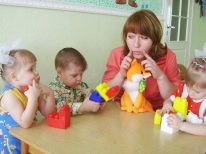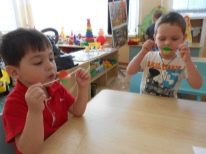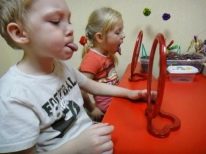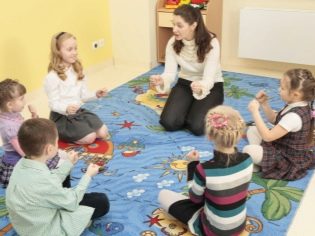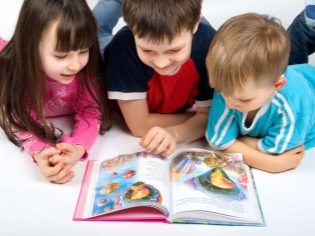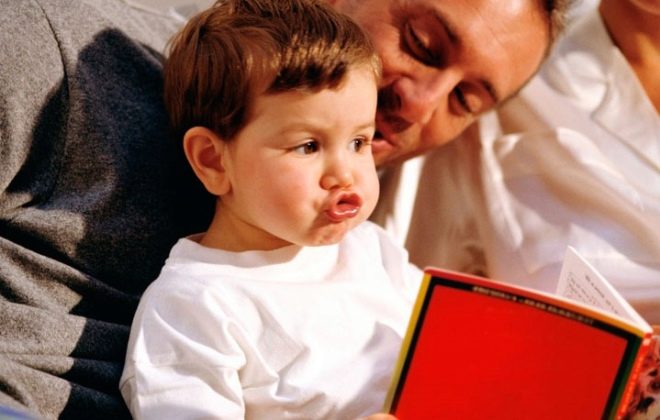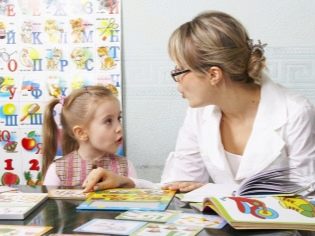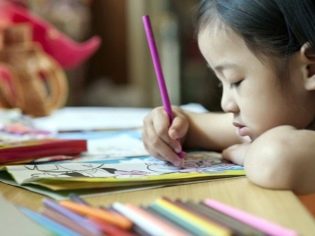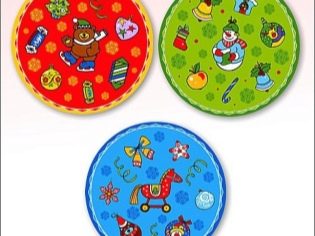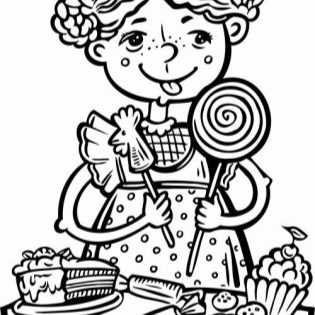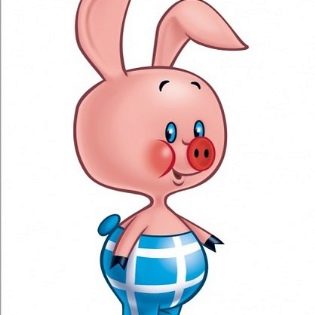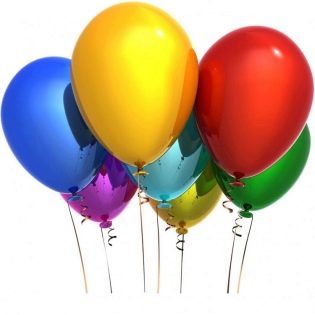Speech therapy games for children 6-7 years
Any deviation in the normal pronunciation of sounds can create a lot of inconvenience for a child of preschool and primary school age. A 6–7-year-old baby compares his speech with the speech of other children, and if there are defects, he begins to be embarrassed, closes, and reluctantly makes contact. This prevents him from normally building relationships with peers and learning, because studying in elementary school is inextricably linked with speech functions.
To help the child overcome the difficulties can a speech therapist and a child psychologist. Many parents themselves are actively involved in the correction of the child's speech, doing it at home. In this material we will present some of the most effective speech therapy games for preschoolers.
When do you need homework?
Preschoolers who have problems with sound pronunciation, in a kindergarten or school of early development are speech therapy examination. In the course of this unusual diagnostics of speech possibilities, the speech therapist finds out how early the child spoke, which words were the first ones when he learned to build sentences, whether he has speech defects and difficulties in pronouncing certain sounds.
The following sounds and combinations are usually examined: C, HB, H, HH, C, W, F, S, H, R, R, L, L. Not only a separate pronunciation is evaluated, but also their sounding in words and syllables.
The speech therapist also assesses the work of the articulatory apparatus of the child, its bite, the condition of the teeth, tongue and lips. And only after that all data is recorded in the voice card. It also includes the appointment of a specialist.
In addition to visiting the speech therapist’s office in a group or individually, parents are encouraged to engage with a preschooler at home. It is such homework that causes a lot of questions for parents.
How to build a lesson
The optimal form of learning information for children 6-7 years old is a playful form. At this age, boys and girls have a need not just for games, but for plot and role-playing tasks in which they will be able to try themselves in different roles. This must be taken into account when planning home speech therapy classes.
To spend them should daily, giving at least 10-15 minutes. Ideally, you should study with your child three times a day for 10 minutes.
In each lesson, it is desirable to include the following components:
- warm-up (gymnastics) for speech apparatus - 3-5 minutes;
- logorhythmics (pronunciation of problematic sounds in rhymes and chistopaskih) synchronously with the movement, in time with the jumps or walking - 1-2 minutes;
- breathing exercises with the pronunciation of problem sounds on the exhale (1-2 minutes);
- poems and songs can be combined with movement, painted with emotional facial expressions and gestures (3-4 minutes);
- speech therapy games with didactic material (4-5 minutes);
- New exercises - show and repeat (2-3 minutes).
As you can see, it does not take much time.
In addition to the obvious benefits for the development of speech, such joint activities and games will benefit the communication between adults and the child, they help to better understand each other and establish trusting relationships.
Exercises for speech apparatus
Articulation gymnastics can be a very funny and entertaining pastime. Parents can offer the child to stick out the tongue like a snake, “hang it down” like a tired doggy, with your tongue hanging out, you can draw something in the air so that the mother tries to guess what the child has depicted.Lips put in a tubule, represent an elephant and a small fish, stretch in a wide smile, bark teeth, like an angry lion.
Such simple exercises are good. develop facial muscles, muscles of the lips, tongue, jaw, as well as uplifting both the child and adults. If you accompany articulation gymnastics with funny sounds that complement the animal being depicted, then fun is guaranteed for everyone.
Tongues and tongues
The value of chistoplovok difficult to overestimate. They do not allow the child to miss in the word sound, the pronunciation of which is given to him with difficulty, to replace it with a similar, but different sound.
Motto and Mom and Dad can easily compose on their own. To this end, the beginning and end of the rhymed couplet or quatrain include the sound or combination of sounds with which the child often has problems.
For example, in a preschooler with a problematic “L”, pronunciation will be much better if, in rhythmic exercises, walking, jumping, while dancing, he will pronounce a proverb on this sound:
La la la winter has come,
Paws trees whitened,
Ice bound, swept,
Forest bewitched.
With the problem sizzling to the child, the sayings with an abundance of such sounds will help:
Schi-shchi-shchi go look
Shu-shu-shu fire carcass
Cha-cha-cha give a roll.
With sound P, which is difficult for a large number of preschoolers, it can be mastered by regularly using these chauffeurs:
Ra-ra-ra, ra-ra-ra outside the window is hot,
Re-re-re, re-re-re walk in the yard.
When choosing a tongue twister, you should also pay attention to the sounds and combinations of sounds that prevail in them. So, the well-known “Sasha with dryers” will help with defects in the pronunciation of hissing sounds.
For training "P" you can emotionally tell a patter about an otter in gaiters, which in the depths of the tundra collects cedar cores, or a poem about cancer in the river and an unlucky Greek.
To assimilate the correct pronunciation of “L”, you can recall the story of a bell not cast in a bell.
The complexity and pace of pronunciation of tongue twisters should be increased gradually, starting with a couple of sentences at a slow pace and ending with a pair of quatrains at a competitive pace — who will pronounce without errors faster.
Games and tasks
Classes for home well complement the game with the use of pictures. They will not only help develop speech, but also have a beneficial effect on the development of imagination, the ability to compose and build stories and express their thoughts. For the next classes you will need to print the following pictures on ordinary A4 sheets.
If they are black and white, you can pre-paint them with the child, because drawing, like writing, develops fine motor skills and stimulates the development of speech. As soon as the pictures are ready, we start playing.
"Snow fairy tale"
The game for the development of pronunciation sizzling, as well as "Z" and "C". Snowman and Snow Maiden are going on a trip. They need to pack their bags. The task of the child is to send each of the characters a circle of paper on the object pasted on or pasted on it.
The Snow Maiden collects only items in which “Ш”, “Ж”, “Щ” and “Ч” sounds, and the Snowman - only those circles, on which are depicted objects in the title of which is “С”, “З”.
For circles, you can use the following words and images - sun, umbrella, fur coat, hat, brush, cup, sundress, bag, mittens, scarf, clock, doggy, suitcase, sweater, lock, bunny and others.
"Zina-sweet tooth"
For this sweetheart girl picture game, cut candy-shaped pieces out of ordinary landscape paper. For each paper “sweetness” there is a picture with an object or an animal, in the title of which there is a problem sound.
If a child “limping” L and R, then you can stick or draw on the “candy” lion, candy, fish, cancer, rainbow, leaves, lily, roses, kangaroos, sharks, etc. As soon as the baby correctly pronounces the sound word painted girl Zina gets candy.
"Piglet goes to visit"
All preschoolers remember the history of Piglet, who came to visit with balloons. If you cut balloons out of paper and place images on them, in the title of which there are sounds that are problematic for the child, you can play how many balls Piglet can collect.
Each correct pronunciation of the sound - plus one ball for the pig. At the same time the child will practice in the bill.
"Sleepy Pony"
To the picture of a sleeping pony - the hero of the beloved cartoon of modern children - you will need to cut small clouds out of paper. They should stick the images of various objects, animals, natural phenomena. The more such clouds, the better. In the title of the picture there should be sounds that succeed the child the worst of all. Elephant, tiger, rain, toad, wolf, apple, crocodile, fish, ball - these are just some options.
First, the child needs to answer the question: what did the dreamy pony dream about? For this, he must name each word legibly and repeat to fix the result.
Then leave a few "clouds" and ask the kid to come up with a dream plot. For example, you left a tiger, a lion, a rainbow and a crocodile. The task of the child is to write a small story with these words. This may be a story about how beasts in the jungle first saw a rainbow.
Support the child, help him, give him a chance to show all his fantasy. Gradually, problematic words will automatically turn out better.
Useful tips
Parents should be aware of the following points:
- Engage only when the child is set to play. You should not force a son or daughter to speech therapy classes.
- Show more patience, cheer up the child, do not scold him, do not demand immediate correct pronunciation.
- Compose and invent new games according to the scheme of the previous ones, let your favorite children's characters and characters of games and cartoons appear in your games.
- Do not despair if the child first complains of fatigue. Gradually his speech apparatus will get stronger, and correct reproduction will become the norm, a natural process.
Another game on the development of speech, see the following video.
